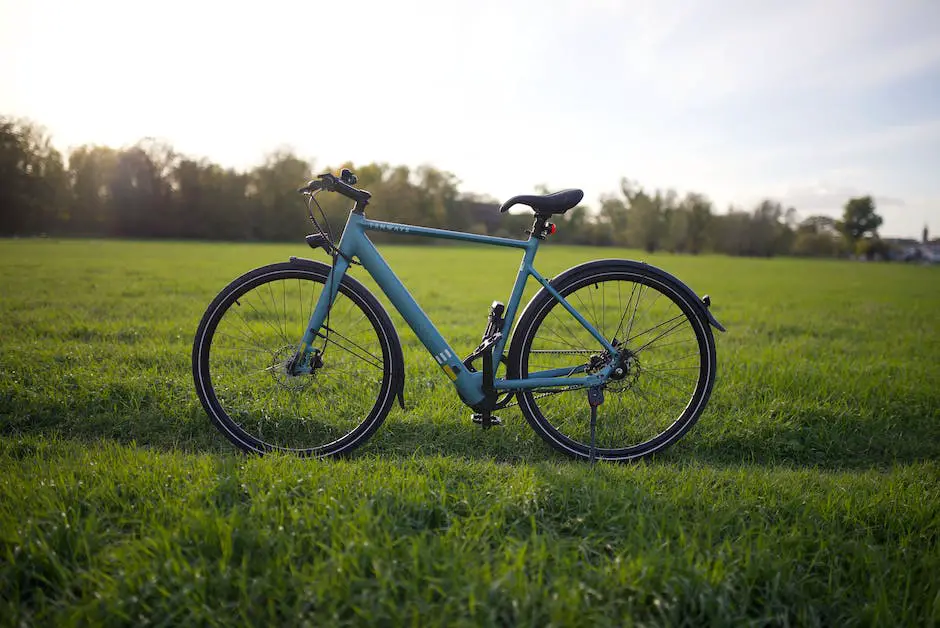In an age where climate change looms large and the quest for sustainable living becomes increasingly pressing, electric bicycles (e-bikes) emerge as a beacon of hope in the transportation sector. Understanding e-bikes and their carbon footprint is not just about embracing a trendy technology; it is about recognizing the potential for significant environmental change. E-bikes offer a unique opportunity to reduce greenhouse gas emissions, ease urban congestion, and foster a healthier lifestyle. As we delve into the multifaceted benefits of e-bikes, from their energy efficiency to the nuances of their life cycle impact, we equip ourselves with the knowledge to make informed decisions that prioritize our planet’s well-being. Thus, embracing e-bikes is more than a personal choice—it is a collective step towards a more sustainable future.
Understanding E-Bikes and Carbon Footprint
Pedal Towards a Greener Future: How E-Bikes are Revolutionizing Eco-Friendly Transportation
If you’ve been zooming past traffic jams and enjoying the fresh air with the electric buzz of a motor beneath you, then you’re already part of the e-bike revolution—a growing movement that’s pedaling towards a more sustainable and eco-friendly mode of transportation. E-bikes are not just the latest trend for fitness enthusiasts and technology aficionados; they’re harbingers of a cleaner, greener way to travel. But just how exactly do e-bikes help trim down those pesky carbon emissions that traditional transportation methods are known for? Fasten your helmets, because we’re diving into the nitty-gritty of e-bikes and their environmentally-friendly superpowers.
First, let’s talk about efficiency. E-bikes come equipped with an electric motor that assists your pedaling, meaning you can cover more distance with less effort. This makes them a fantastic alternative to gas-guzzling cars, especially for short to medium distances typically covered by urban commuters. By choosing an e-bike over a car, one significantly cuts down on CO2 emissions—up to 236 gram per mile (this figure will naturally fluctuate based on vehicle type and fuel efficiency). Over time, this adds up to a substantial reduction in your carbon footprint.
When compared to public transportation like buses and trains, e-bikes still edge out as the greener option in many cases. While mass transit is undeniably better for the environment than single-occupancy vehicles, buses still rely heavily on diesel fuel and contribute to air pollution. Trains can be greener options, yet their reach and convenience may not compare to the point-to-point and on-demand capabilities of an e-bike. With every pedal on an e-bike, you’re choosing a mode of transportation that’s nearly emission-free, especially if you’re charging the bike with renewable energy.
But it’s not just about what e-bikes aren’t emitting; it’s also about the resources they save. Manufacturing a car demands a huge amount of raw materials and energy—about 17 times more than that required for manufacturing an average e-bike. Likewise, the infrastructure needed to support cars, including roads, parking lots, and oil refineries, is far more extensive and damaging to the environment. E-bikes, with their smaller size and less resource-heavy needs, lessen the burden on our planet by demanding less from it both in production and functionality.
Furthermore, the ripple effect of e-bike adoption can lead to broader systemic changes in urban planning and energy use. As e-bike popularity grows, so does the demand for bike lanes and an overall more cycle-friendly infrastructure. This leads to urban environments that aren’t just oriented around cars but instead promote diverse methods of transport that are kinder to the Earth. Additionally, the more people opt for electric modes of transport, the greater the push for cleaner energy production becomes. This means more investment in solar, wind, and hydroelectric power sources that can recharge our e-bikes and other electric vehicles, completing the cycle of emission reduction.
Yes, no method of transportation is without its environmental impact, and e-bikes do have a footprint associated with battery production and electricity use. However, when stacked against the alternatives—namely gas-powered cars and motorcycles—e-bikes cruise ahead with far fewer emissions and energy consumption. They’re not just a boon for personal health and congestion reduction; they’re tangible contributors to lowering greenhouse gas emissions.
To harness the true green potential of e-bikes, ensure responsible usage, like recycling batteries and powering the e-bike with clean energy wherever possible. Remember, every push of the pedal on an e-bike isn’t just good for the body; it’s a stride for the planet. Embrace the breeze, enjoy the ride, and relish in the knowledge that with every trip, you’re contributing to a healthier, more sustainable world. No extra summary needed here—just get out and ride!

Incorporating E-Bikes into Daily Life
Incorporating e-bikes into daily transportation doesn’t just scream efficiency; it also paves the way for a greener commute. Here’s how to seamlessly integrate these two-wheeled wonders into everyday life:
Commute Smarter, Not Harder
Transform the dreaded rush hour commute by swapping out the car for an e-bike. Begin by mapping out the most bike-friendly route, taking into account bike lanes and traffic patterns. With an e-bike’s added oomph, tackling those distances and inclines becomes a breeze, and you’ll cruise into work without breaking a sweat.
E-bike Pooling
Picture carpooling, but with e-bikes. Coordinate with colleagues who live nearby and enjoy a group commute. It fosters a sense of community, provides safety in numbers, and further reduces carbon footprints. Bike pooling can also extend to running errands or group leisure rides.
Charge Right, Charge Light
Keep the e-bike’s battery charged and ready to roll. Ideally, charge it during off-peak hours when the demand for electricity is lower. Smart chargers can aid in managing charging cycles, ensuring the battery is topped off when rates are cheapest and the grid is greenest.
Blending Modes of Transport
Mix things up by combining e-biking with other forms of transportation. Most public transit systems accommodate bikes, so one can bike to the station, hop on a train or bus, and continue from the next stop, all while reducing their carbon footprint. It’s efficient, economical, and environmentally savvy.
Errands on Two Wheels
Transform routine tasks like grocery shopping or post office runs into an opportunity to ride. Equip the e-bike with panniers or a sturdy rack to handle the haul. This not only replaces numerous short car trips but also showcases the versatility of e-bikes as true car replacements.
Adjusting Work-Life Balance
Embrace e-bikes as part of a new routine that promotes physical wellbeing. Take a longer, scenic route home to decompress from work or enjoy weekend rides. The flexibility of e-bikes allows riders to adjust their effort level, ensuring they can be as invigorated or relaxed as they wish.
Planning with E-bikes in Mind
Consider e-bikes during life’s larger decisions. Choose housing, jobs, and schools with bike accessibility in mind. Advocate for more bike infrastructure and support local businesses that cater to cyclists. This approach cements e-bikes as a cornerstone of everyday travel.
Smart Tech Integration
Take advantage of technology by using apps that track routes, weather conditions, and e-bike performance. Some offer insights on battery life and maintenance reminders, simplifying the management of one’s e-bike and ensuring it always functions at peak efficiency.
E-bike adoption is more than a trend – it’s a lifestyle shift that encourages health, saves money, and honors Mother Earth. With each pedal assist, riders are contributing to a collective effort toward a cleaner, more sustainable future. Happy riding!

Advocacy and Community Engagement
Shifting Gears: Engaging the Community in E-bike Enthusiasm
Elevating public consciousness about the joys and benefits of e-bikes is a vital step in nudging neighbors towards greener commutes. To help weave e-biking into the fabric of your community, consider launching local awareness campaigns. Tailor the message to resonate with your community’s unique culture, whether that’s through highlighting cost savings, health benefits, or the pure joy of open-air travel.
Community-Based Test Rides and Experience-Sharing
A ride is worth a thousand words. Facilitating test ride events with local e-bike shops can demystify electric cycling and spark excitement. Pair these events with forums where seasoned e-bikers share heartfelt testimonials and practical advice. It’s this genuine sharing that often converts skepticism into enthusiasm.
Incentivize the Switch
Incentives have the power to tilt the scales towards e-bike adoption. Work with local businesses and government entities to offer subsidies, rebates, or tax benefits for e-bike purchasers. Remember, tangible rewards can serve as a substantial nudge for those sitting on the fence.
Infrastructure Matters
Lobbying for improved cycling infrastructure is a pivotal move in this crusade. Advocate for safe bike lanes, secure parking, and e-bike-friendly public transportation. Communities with e-bike-friendly amenities are more likely to see a surge in adoption rates.
Youth Outreach: Paving the Way for Tomorrow’s Riders
Capture the imagination of the younger generation with educational programs in schools. Introducing e-bikes as part of a modern, tech-savvy lifestyle can foster a generation that naturally inclines towards sustainable transportation.
Establish E-bike Advocacy Groups
Strength is in numbers. Bringing together e-bike enthusiasts to form local advocacy groups can amplify the movement’s voice. A well-organized group can push for policy changes, host events, and be a beacon of support for new riders.
Leverage Social Media
Harness the connective power of social media to broaden your outreach. Engaging content, success stories, and interactive challenges can enthrall a digital audience that’s eager to be part of the latest trends. Tag, share, and tweet to keep the e-bike narrative alive and spinning!
By adopting a multifaceted approach and infusing community initiatives with passion, we can shift gears towards a more sustainable future. One e-bike at a time, let’s pedal forward into a greener tomorrow. With enthusiasm, practical efforts, and a little bit of ingenuity, e-bikes can become more than just a mode of transport—they can become a way of life.

The journey towards sustainability is not one to be traversed alone; it thrives on the shared efforts of individuals and communities. By incorporating e-bikes into our daily routines, advocating for improved infrastructure, and engaging in community initiatives, we create ripples that can grow into waves of positive change. E-bikes are a testament to the synergy between innovation and environmental stewardship, providing a path to cut carbon emissions while enhancing our quality of life. As we continue to pedal forward, let us carry the message of sustainable transport further into the horizons of our communities, ensuring that the revolution of e-bikes rolls on towards a greener, cleaner future for all.

